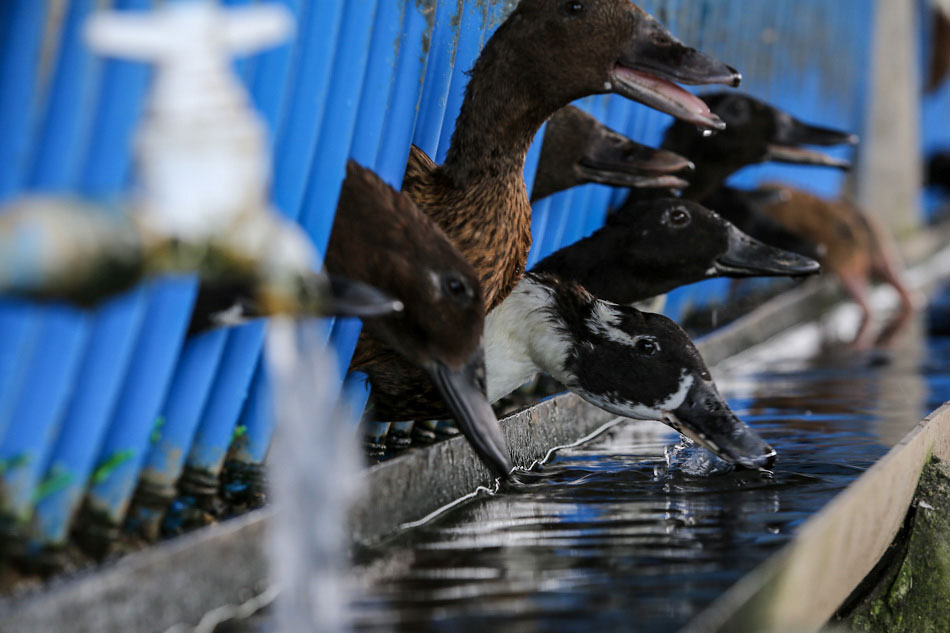DOH: No human case of avian influenza in Philippines so far | ABS-CBN
ADVERTISEMENT

Welcome, Kapamilya! We use cookies to improve your browsing experience. Continuing to use this site means you agree to our use of cookies. Tell me more!
DOH: No human case of avian influenza in Philippines so far
DOH: No human case of avian influenza in Philippines so far
Davinci Maru,
ABS-CBN News
Published Jan 13, 2023 03:45 PM PHT
|
Updated Jan 13, 2023 03:49 PM PHT
MANILA — The Philippines has not yet recorded a case of a human being infected with avian influenza, the Department of Health said on Friday, after the disease was detected in several countries.
MANILA — The Philippines has not yet recorded a case of a human being infected with avian influenza, the Department of Health said on Friday, after the disease was detected in several countries.
According to Dr. Alethea De Guzman, director of DOH's epidemiology bureau, the country is currently at Stage 2 of the 4-tier preparedness and response plan, which means the bird flu is currently detected in domestic fowls.
According to Dr. Alethea De Guzman, director of DOH's epidemiology bureau, the country is currently at Stage 2 of the 4-tier preparedness and response plan, which means the bird flu is currently detected in domestic fowls.
"Wala pa tayong ni isang (we don't have any) confirmed human avian influenza case and we want to be able to retain that status," she said in a virtual town hall forum.
"Wala pa tayong ni isang (we don't have any) confirmed human avian influenza case and we want to be able to retain that status," she said in a virtual town hall forum.
Avian influenza is a viral disease that affects wild and domestic birds. Its most severe strains are called highly pathogenic avian influenza (HPAI), also known as high path, and includes H5N1 virus.
Avian influenza is a viral disease that affects wild and domestic birds. Its most severe strains are called highly pathogenic avian influenza (HPAI), also known as high path, and includes H5N1 virus.
ADVERTISEMENT
This strain is known to be lethal to poultry and is potentially fatal in humans, the DOH said.
This strain is known to be lethal to poultry and is potentially fatal in humans, the DOH said.
Human cases have occurred in people who had close contact with sick birds and contaminated materials, the agency added.
Human cases have occurred in people who had close contact with sick birds and contaminated materials, the agency added.
Latest data from the World Health Organization showed that there were 868 human cases with avian influenza A(H5N1) reported in 21 countries.
Latest data from the World Health Organization showed that there were 868 human cases with avian influenza A(H5N1) reported in 21 countries.
Of the figure, some 455 patients died, bringing the case fatality rate to 53 percent.
Of the figure, some 455 patients died, bringing the case fatality rate to 53 percent.
On Jan. 7, Ecuador reported its first human case of avian influenza, involving a 9-year-old girl who is presumed to have contact with infected birds domestically.
On Jan. 7, Ecuador reported its first human case of avian influenza, involving a 9-year-old girl who is presumed to have contact with infected birds domestically.
While the H5N1 virus is currently not a pandemic, De Guzman warned the virus could change into a new, dangerous form, which is easily spread from person-to-person and could become a pandemic disease.
While the H5N1 virus is currently not a pandemic, De Guzman warned the virus could change into a new, dangerous form, which is easily spread from person-to-person and could become a pandemic disease.
An outbreak of avian bird flu, a fast-spreading virus among poultry but rarely detected in humans, has been detected across multiple continents, leading authorities to order the culling of tens of millions of chickens and turkeys worldwide.
An outbreak of avian bird flu, a fast-spreading virus among poultry but rarely detected in humans, has been detected across multiple continents, leading authorities to order the culling of tens of millions of chickens and turkeys worldwide.
— With a report from Agence France-Presse
ADVERTISEMENT
ADVERTISEMENT



